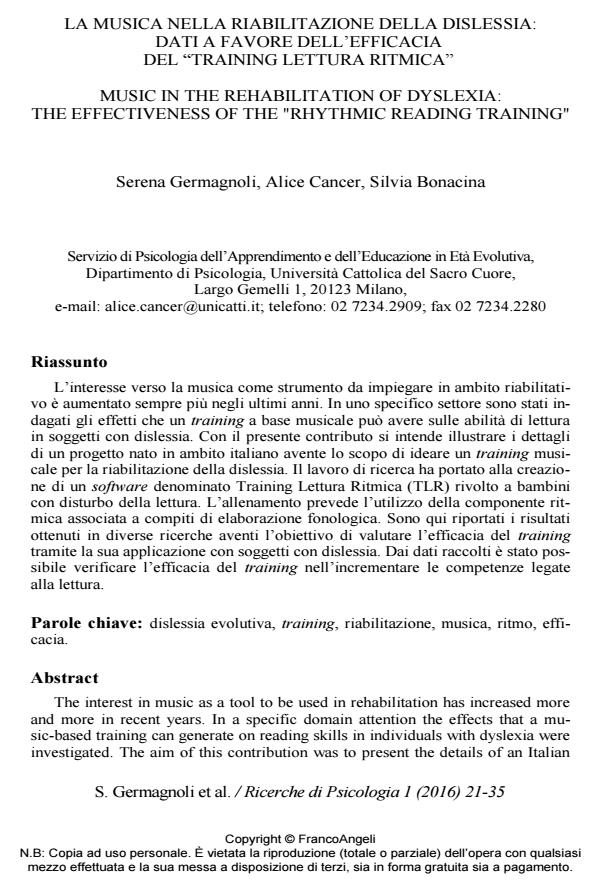Music in the rehabilitation of dyslexia: the effectiveness of the "rhythmic reading training"
Journal title RICERCHE DI PSICOLOGIA
Author/s Serena Germagnoli, Alice Cancer, Silvia Bonacina
Publishing Year 2016 Issue 2016/1
Language Italian Pages 15 P. 21-35 File size 100 KB
DOI 10.3280/RIP2016-001002
DOI is like a bar code for intellectual property: to have more infomation
click here
Below, you can see the article first page
If you want to buy this article in PDF format, you can do it, following the instructions to buy download credits

FrancoAngeli is member of Publishers International Linking Association, Inc (PILA), a not-for-profit association which run the CrossRef service enabling links to and from online scholarly content.
The interest in music as a tool to be used in rehabilitation has increased more and more in recent years. In a specific domain attention the effects that a music- based training can generate on reading skills in individuals with dyslexia were investigated. The aim of this contribution was to present the details of an Italian project where a music training for the rehabilitation of dyslexia has been devised. The research work led to the creation of a software, called Rhythmic Reading Training (RRT) addressed to children with reading disorders. The training is based on a rhythmic component associated with phonological processing. Results obtained in several studies are reported where the effects of the training with subjects with a diagnosis of dyslexia was tested. Findings supported the effectiveness of training in increasing the skills related to reading.
Keywords: Developmental dyslexia, training, rehabilitation, music, rhythm, efficacy.
Serena Germagnoli, Alice Cancer, Silvia Bonacina, La musica nella riabilitazione della dislessia: dati a favore dell’efficacia del "training lettura ritmica" in "RICERCHE DI PSICOLOGIA " 1/2016, pp 21-35, DOI: 10.3280/RIP2016-001002